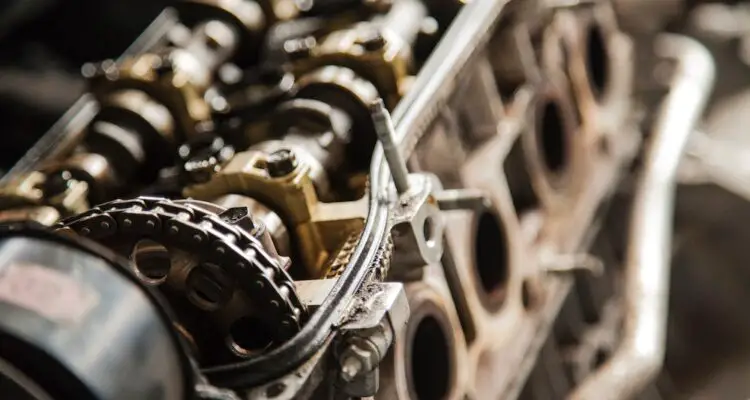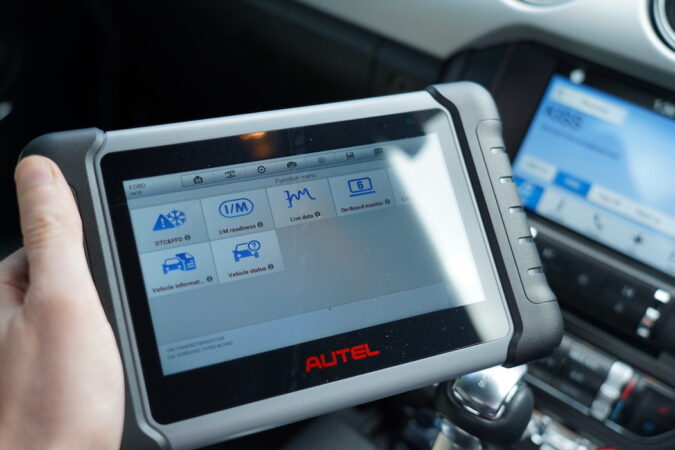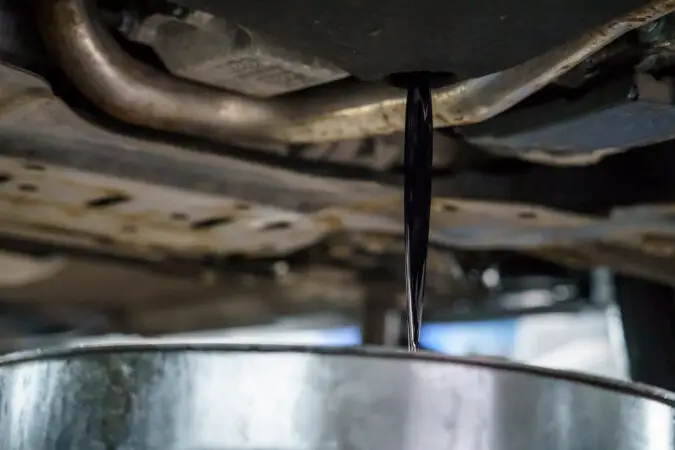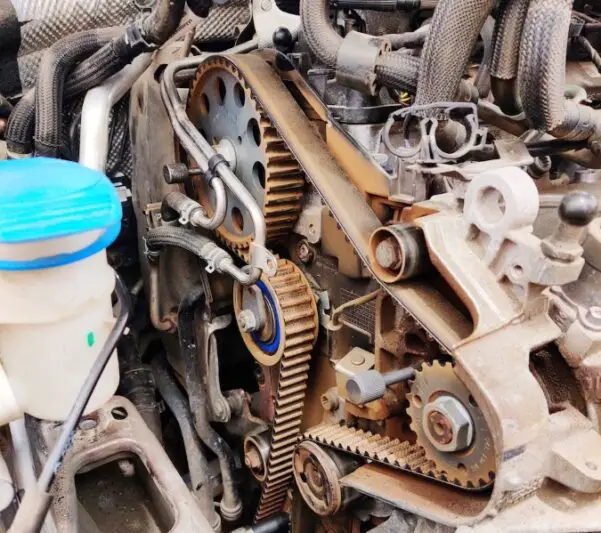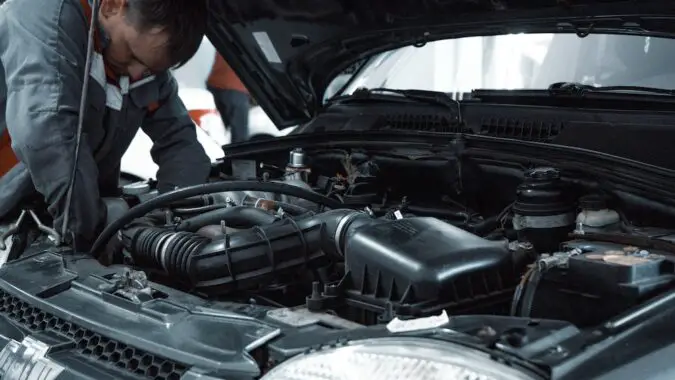The P0010 trouble code can be quite common in certain cars. While trouble codes are daunting, learning what they mean and what causes them may soften the blow of the repair costs. And you may even find more affordable solutions to keep your car running.
In this post, we’ll attempt to explain what the P0010 code means. We’ll explain what the code means, what might’ve caused it, and the potential repairs and costs that you may need to face. Here’s our table of contents to easily navigate through the article.
P0010: What Does It Mean?
So, first and foremost, what does the code mean? The P0010 code translates to ‘A’ Camshaft Position Actuator Circuit (Bank 1). Translate that into plain English, it means you have an issue with one of the camshaft’s position actuators in bank 1 of the engine. This is a code you might encounter when your car has a Variable Valve Timing (VVT) system, which is virtually every modern car.
This is a universal/generic trouble code, meaning it means the same thing regardless of your car’s make and model. Whether your car is a Chevy, Ford, Toyota, or any European make, this code means the same thing.
Here’s a tip: if you want to know whether the code is generic or a manufacturer-specific code, take a look at the second digit (the first number after the letter). If it’s ‘0’ such as in this case, then it’s a generic code that means the same thing across all cars. If the number is ‘1’, then it’s a manufacturer-specific code.
An advanced OBD diagnostics tool will be able to explain what the code means. However, if you have a basic OBD scanner, it won’t tell you what the code means. And if you have the number ‘1’ as the second digit, you’ll have to search specifically what it means in your car’s make.
Note this applies only to cars with an OBD2 system, which is every car since 1996. Cars before 1996 had OBD1 systems and their proprietary. This means the diagnostics process differs between car make and model.
Anyway, let’s focus on that P0010 code. As mentioned, this indicates an issue with your car’s variable valve timing. So, before we explain the causes and symptoms, we’ll need to explain more about camshafts and VVT systems:
P0010: Trouble With The Variable Valve Timing
We’re going to have to break this into three parts. Before we get into variable valve timing, let’s understand more about valves and camshafts. Note that if you already have an idea of how internal combustion engines work, you can skip this next part.
Understanding Valves And Camshafts
Your car’s engine works by combusting fuel and air inside the engine’s cylinders. The explosion results in a force that moves the pistons, which in turn drives the crankshaft. Then through a series of rotating shafts and gears, this drives your car.
To burn fuel and air, they need to enter the engine’s cylinder, hence the need for valves in the engine. The engine has two types of valves: the intake valve and the exhaust valve. During the intake process, the intake valves open to allow fuel and air to enter the cylinder. Meanwhile, the exhaust valves remain closed during this process.
The combustion process will result in exhaust gases in the cylinders and they will need to escape. So, after combustion, the exhaust valves will open to allow these gases to escape. Meanwhile, the intake valves will remain closed. This process is known as the exhaust stroke.
Opening these valves is the job of the camshaft. This is a rotating shaft on the top of the engine’s cylinder with lobes attached to it. The lobes are often referred to as cams, hence the name camshaft.
Anyway, when the lobes come into contact with the valves, they will push the valve down to open it. Afterward, through the use of a spring, the valve will return to its original position and close again. So, that’s how the camshaft and valves work. Now, you can understand how the variable valve timing work:
How Variable Valve Timing System Works
Variable Valve Timing or VVT for short, as the name suggests, is a system that allows the valve to open for different amounts of time. The VVT system exists in virtually every modern car, and carmakers usually have their own name for it. Such as Toyota and VVT-i, or BMW and VANOS, and most notably, Honda and VTEC.
But why is this system so popular? Well, the VVT system allows the engine to maximize fuel economy, performance, and/or emissions depending on the need. For example, when you’re driving slowly, the intake valve will open and close relatively quickly. This is because you’re going slowly and don’t need a lot of power, which means you don’t need a lot of fuel and air.
Meanwhile, if you’re driving quickly and at a high engine RPM, the system will allow the camshaft to open the intake valves for a longer period. This allows for more fuel and air to enter the engine, resulting in more power which is what the engine assumes you need when going fast and at a high engine RPM.
All this means the engine can maximize fuel consumption, without sacrificing performance when you need it. It also helps in reducing emissions. The system works by using cams of different sizes on the camshaft. The bigger ones will push the valves deeper, and they will have a larger opening and as a result, they remain open for a longer period.
These different cam sizes are often referred to as cam profiles. Now, there are several types of variable valve timing. But they all work by using different cam profiles and they have the same purpose: to allow the valves to open for different amounts of time depending on the need.
P0010 A Camshaft Position Actuator Circuit (Bank 1)
Now that you have a better understanding of how camshafts and the variable valve timing system works, we can get back into the P0010 trouble code. As mentioned, there are several types of VVT systems. One of the most popular ones is the cam switching system, which uses an actuator to switch the cam profile depending on the engine’s needs.
This system works by using an oil control valve, otherwise known as an actuator or solenoid. When the Engine Control Unit (ECU) determines the engine needs to switch the cam profile, it will switch by using this actuator. This allows oil to flow through, and then the engine can switch its cam profiles.
The P0010 code indicates that the “A” camshaft actuator isn’t working properly. As for the ‘Bank 1’, it means that the actuator that’s facing the issue is in bank 1 of the engine, which is the bank where cylinder number 1 lies.
If you have an inline-design engine, such as an inline-four or inline-six (also known as straight-six) engine, then it only has one bank. If you have a V-configuration engine, such as a V6 or a V8, then the engine has two banks; the cylinders are divided equally between banks.
To locate bank 1 of the engine, you’ll need to check your owner’s manual to find the location of cylinder number 1 as it differs between make and model. If you can’t find it in your owner’s manual, we recommend searching owner forums to find some answers.
P0010 Trouble Code Signs
You should note that sometimes the ECU can register these trouble codes even when there’s no actual issue with the engine. If this is the case, you can reset the check engine light to get rid of the code. If it doesn’t return, then it was probably an error with the ECU.
However, if the check engine light and trouble code return, then you actually have an issue with your camshaft position actuator. Here are some signs you might notice when driving with a P0010 code. But note that you may only see one of the symptoms depending on your engine’s condition:
1. Higher Fuel Consumption
Since the purpose of the VVT is to make the engine as fuel-efficient as possible without sacrificing too much performance, you might see higher fuel consumption when you have an issue with it. In this case, it could be because the engine is stuck on the performance cam profile.
This means the valve will open for a longer period even when driving slowly. This leads to more fuel entering the cylinder and the engine consuming more fuel when you don’t actually need it. This may be difficult to detect sometimes but should be noticeable if your car has an MPG monitor.
2. Poor Or Rough Idling
The next symptom you might experience is poor or rough idling. A car’s engine should always idle at a stable RPM, usually somewhere around 600 – 800rpm depending on the car. Note that it’s perfectly normal for your car’s engine to idle at around 1,200rpm for a couple of minutes during a cold start.
In any case, the engine should idle at a steady RPM. The P0010 can make the engine idle roughly or poorly. This can manifest in either the RPM needle jumping around or the engine idling too low. This is because the camshaft isn’t working properly and isn’t opening the valves correctly.
It’s also possible that the engine will idle at a higher RPM than normal. However, this is commonly caused by an air intake issue. Most commonly with the Idle Air Control (IAC) valve.
3. Reduced Performance
Finally, you may experience reduced performance at higher RPMs. In this case, it’s usually because the engine is stuck on the fuel-efficient cam profile and unable to engage the performance cam profile due to the actuator. Since the actuator can’t switch the cam profiles, the engine’s valves aren’t opening as much as they should, hence less fuel entering the engine resulting in lower performance.
Cars with a VVT system usually feel like it gets a “second wind” when it gets to a certain RPM. Like how Honda’s VTEC engine suddenly gives out more power at around 5,000rpm. But in most cars, this effect is less noticeable than in VTEC Honda cars.
Anyway, if your car is stuck on the fuel-efficient cam profile, you’ll probably notice that your car lost its second wind. However, note that not all cars feel like this even if they have a VVT system. This power delivery is also known as the power band, and many other design aspects in the engine can affect the power band of the engine.
P0010 Trouble Code Causes
So, what can cause the P0010 trouble code? Here are the potential causes:
1. Bad Camshaft Position Actuator Or Wiring
The P0010 code appears when the ECU gets an abnormal reading from the camshaft position actuator. So, it’s very likely that the actuator itself has gone bad and can no longer activate. It’s as simple as that, as these actuators/solenoids go bad over time. Or sometimes the wiring for them has gone bad.
There’s no telling how long these actuators last. Sometimes they can last for as long as 100,000 miles or about 5 to 10 years. But other times they will go bad after just a year of driving. Of course, keeping up with general maintenance can help prolong the lifespan of these actuators and many other engine parts. This brings us to the next possible cause…
2. Oil Sludge
It’s very common for the P0010 to pop up when there’s oil sludge in the engine. When oil turns sludgy it becomes thicker and heavier, and the engine has to work harder.
Not only that, this can affect other parts as well including the camshaft position actuator. The actuator works by using oil flow; if the oil is sludgy, it will disrupt the flow and can cause the actuator to not engage when it’s supposed to. So, we recommend checking your engine oil first before you start replacing parts:
- Open the engine bay and locate the engine oil dipstick which has a yellow handle that usually says ‘Engine’ or ‘Oil’.
- Take out the dipstick and inspect the oil on the dipstick (with some insight into how to read oil level on dipstick). You can either wipe it on a clean cloth or touch it with your finger, then inspect the color.
- Good engine oil is either light or dark brown and somewhat clear. The viscosity differs depending on what type you use, but they should feel somewhat thick. Meanwhile, if it’s black and the viscosity is almost gel-like, then you have an oil sludge problem.
Engine oil sludge can appear if you haven’t changed your engine oil in over a year. However, it can also appear if you have a blown head gasket, poor oil circulation, or used the wrong type of oil among other reasons. Some cars also have known problems with oil sludge due to higher operating temperatures, such as the ’97 Toyota Camry.
In any case, we recommend changing your engine oil and filter if you have engine oil sludge. If that gets rid of the P0010 code, then you won’t have to spend money on replacing faulty parts. But if your engine oil is fine, then here are some more potential causes:
3. Bad Engine Timing
Your engine needs to be synchronized to run smoothly, this is also known as engine timing. We won’t explain in detail as it will take too long, but in a nutshell, the engine has to be in sync so that the ECU knows which components need to be activated at any given time, including the camshaft position actuator.
If the engine is out of sync, then it can disrupt the operation of the camshaft position actuator sensor, resulting in the P0010 trouble code. To keep the engine in sync, the job falls to the camshaft, crankshaft, and the engine timing belt/chain. Here are the common culprits for an engine that’s out of sync:
- Bad camshaft or crankshaft position sensor.
- Bad timing belt or chain.
- Faulty timing belt/chain tensioner.
Note that you will see other symptoms when you have an engine timing issue, most commonly engine misfires. Additionally, you’ll see other trouble codes as well such as P0009, P0014, and P0335 amongst others depending on the cause.
P0010 Repair Costs
Okay, now you know pretty much everything about the P0010 trouble code. This leaves us with one question: how much will it cost to repair this code? Well, it depends on what’s causing it in the first place.
As mentioned, the P0010 code can be triggered by engine oil sludge. In this case, a simple engine oil and filter change should rectify the problem. This should cost no more than $125 in most cars.
Meanwhile, if it turns out you have a bad actuator, you’ll need to replace it. This costs somewhere between $300 and $400 on average including labor. Note that some mechanics and repair shops may refer to this as the VVT control solenoid.
If it turns out your engine’s timing is bad, then there are four potential repairs:
- Replacing the camshaft position sensor – $200 – $300.
- Replacing the crankshaft position sensor – $150 – $300.
- Timing belt/chain replacement – $300 – $1,200, timing chain is usually more expensive.
- Timing belt/chain tensioner replacement – $350 – $450.
All of the costs we mentioned above include the labor and parts costs. You may have noticed that engine timing issues are expensive to fix, especially timing belt/chain issues. This is because these replacement jobs are labor-intensive, time-consuming, and takes skill to finish.
Most timing belt/chain replacement job takes around eight hours to finish. And in most cases, you’ll probably have to leave your car at the shop for at least a day.
Can You Do It Yourself?
You can change your car’s oil yourself and possibly replace the VVT control solenoid yourself. However, when it comes to engine timing repairs, we recommend that you leave it to professionals.
As mentioned, engine timing issues are labor-intensive and take skill to finish. Additionally, there’s a possibility that you get the repairs wrong which could lead to even more damage and repairs to the engine.
If it turns out you have a bad camshaft position actuator (VVT control solenoid), then you may be able to replace it yourself. Take a look at this guide video:
The process often entails removing the valve cover to gain access to the actuator. Afterward, simply remove the actuator and replace it with a new one, then reinstall the valve cover. However, note that the exact steps may differ depending on your car’s make and model.
While removing the valve cover isn’t too difficult, it isn’t as simple as an oil change and can be a daunting task to most people. If you’re not confident, we recommend leaving the replacement job to a trusted mechanic or repair shop.
Facts about P0010 Error Code and Its Diagnosis:
- P0010 is a specific variation of OBD II code P0, indicating a malfunction regarding a vehicle’s fuel and air metering.
- The code displays when the ECM attempts to adjust the intake camshaft timing of bank one, detecting any electrical issues in the valve or the circuit going to the valve.
- Symptoms of the P0010 code include illumination of the check engine light, decreased fuel economy, rough running and idling, decreased engine performance when accelerating, and rattling or knocking from the engine.
- The most common cause of the P0010 code is a faulty VVT control solenoid valve, while other causes include contaminated oil sludge in the engine, malfunctioning sensors or wiring, and the engine operating outside normal timing parameters.
- P0010 code may not prevent the vehicle from running properly but will cause the car to fail an emissions test.
- It is not recommended to drive with the code, and car owners should seek a qualified mechanic for diagnosis and repairs as soon as possible.
- Diagnosing the P0010 code requires cleaning or replacing the damaged parts correctly, including taking the timing chain apart to replace a malfunctioning actuator.
- A common mistake in DIY diagnosis is neglecting to check the electrical circuit, which can be dangerous.
- Low oil levels may inhibit oil from being properly channeled into the vehicle’s actuator, and engine sludge would indicate that the oil passages leading to the actuator have been blocked.
- A qualified mechanic will undergo diagnosing the root cause of this DTC by checking for any other codes that are displayed along with P0010 DTC and inspecting the bank one VVT control solenoid valve, repairing any faulty wiring or connectors, and conducting a resistance check of the bank one intake camshaft VVT Control solenoid.
P0010 FAQ
Got more questions about the P0010 code? We try to answer your questions below:
What Does Code P0010 Mean
The code P0010 translates to ‘A’ Camshaft Position Actuator Circuit (Bank 1). This indicates the ECU has detected an abnormal reading from the camshaft position actuator, otherwise known as the Variable Valve Timing (VVT) control solenoid. In a nutshell, your engine is having issues with the variable valve timing system.
How Do I Fix Code P0010
The P0010 code may be caused by engine oil sludge. The sludge can cause the Variable Valve Timing actuator to malfunction, resulting in the P0010 code. In this case, an oil and filter change can resolve the issue. The next possibility is that you have a faulty actuator, in which case you’ll need to replace it which costs up to $400 including labor. However, it may also be caused by bad engine timing. While less common, this will cost up to $1,200 to repair depending on the cause of the bad engine timing.
How Do I Diagnose P0010
We recommend checking the On-Board Diagnostics (OBD) system for other trouble codes. This will tell you whether there’s another problem with the engine that may have triggered the P0010 code. For example, the P0335 code means that you have a faulty crankshaft position sensor. This can throw the engine out of sync, which in turn leads to the P0010 code. If there are no other codes, check the engine oil for sludge, as that may be the cause. But if the engine oil is fine, then it’s likely you have a faulty camshaft position actuator and you’ll need to replace it.
Can I Drive With P0010
If the code was triggered by a faulty actuator, then you can probably still drive the car. However, if it was caused by an oil sludge or bad engine timing, you’ll want to address it immediately as both of those things can lead to severe engine damage in a short period. Our advice is to not ignore trouble codes regardless of the cause; the simplest issues in your engine can easily turn into an expensive repair.
P0010: In Conclusion…
To summarize, the P0010 code indicates you have an issue with the camshaft position actuator in bank 1 of your engine. Otherwise known as the Variable Valve Timing (VVT) control solenoid.
This device controls your engine’s variable valve timing, and you’ll see signs like poor engine idle, reduced performance, and worse fuel consumption when you have an issue with the VVT system.
The solution varies depending on the cause. An oil and filter change may resolve the issue if it was caused by sludge in the engine oil. If you have a faulty actuator, then this should cost no more than $400 to replace including labor.
The Worst case scenario is that your engine is out of sync, and this can cost up to $1,200 to repair depending on the cause and your car’s make and model. Hopefully, this has been a helpful article for you and good luck!
